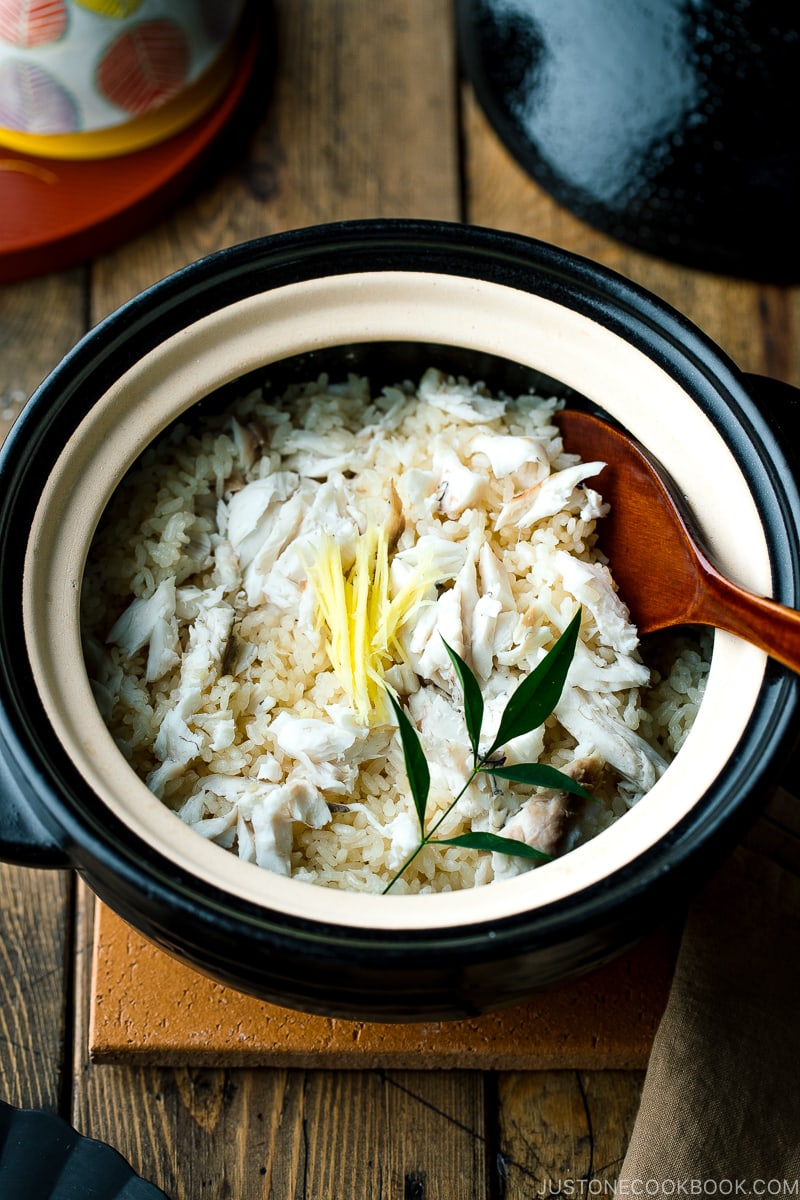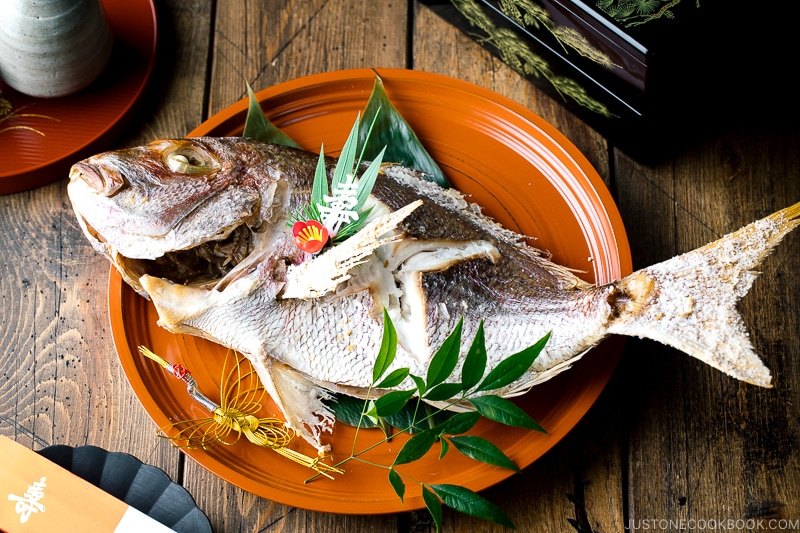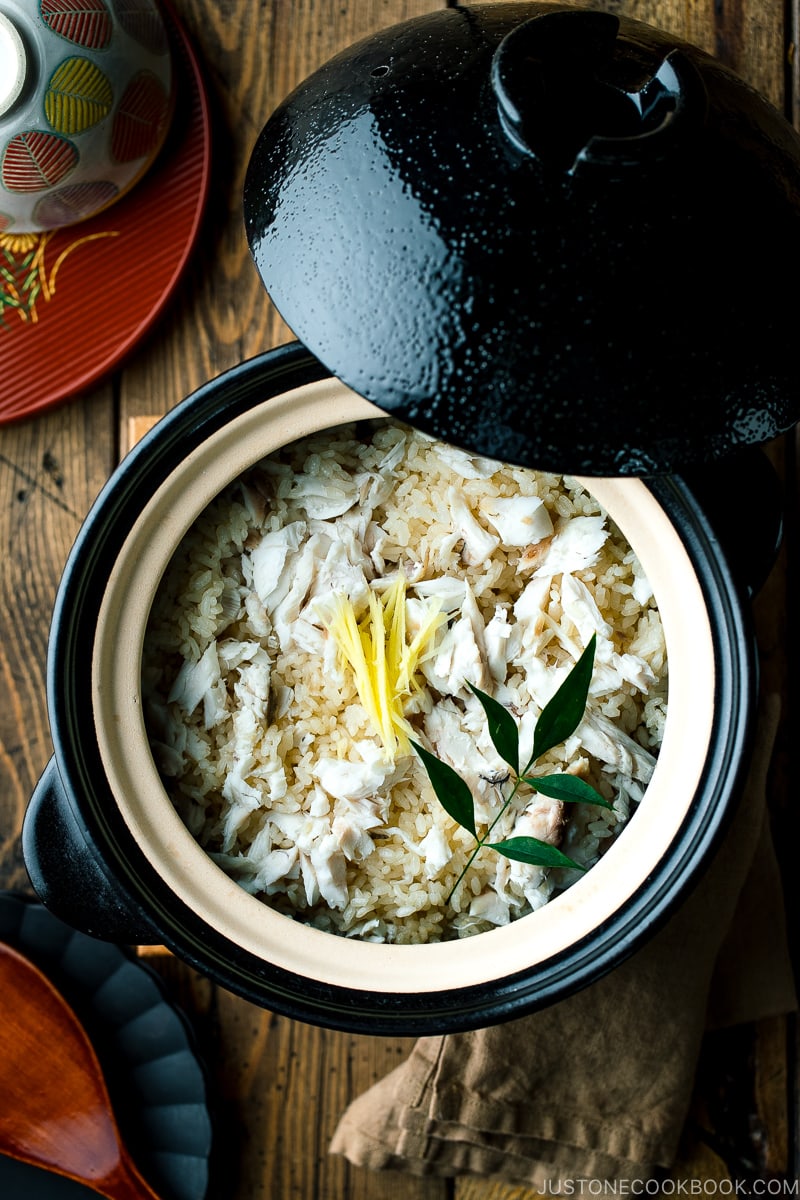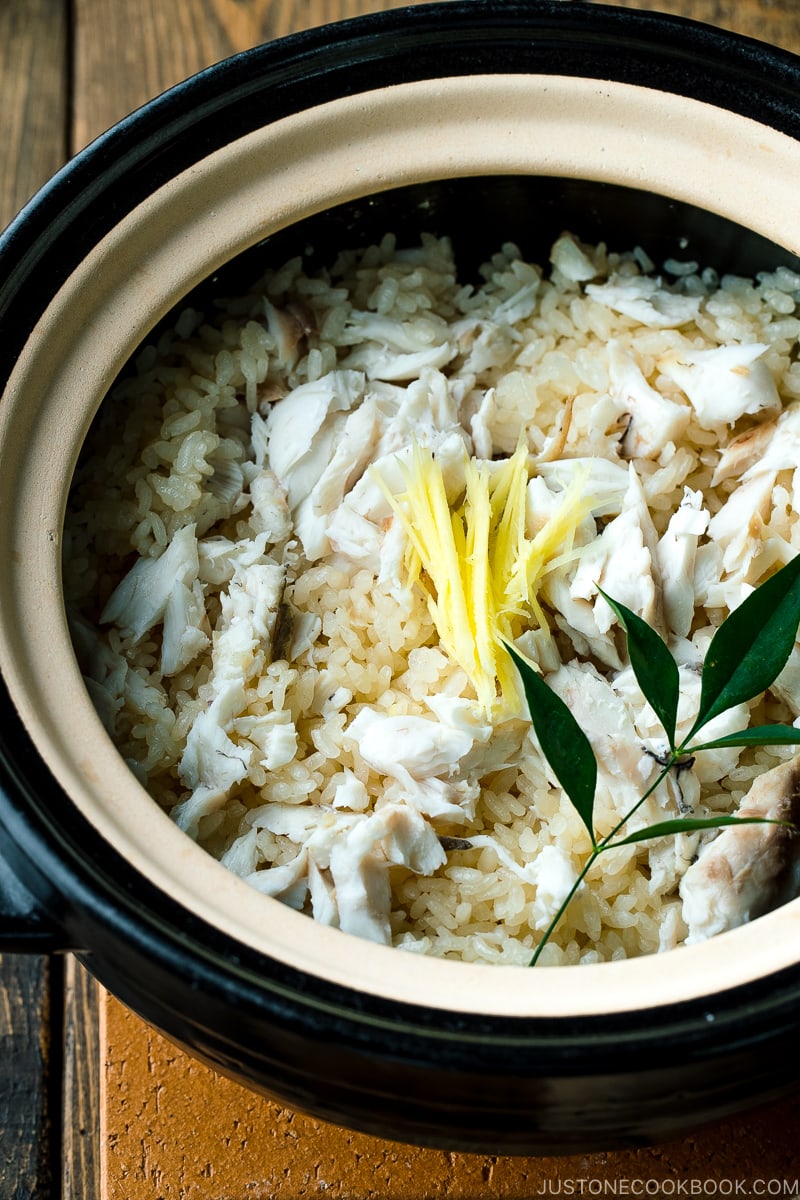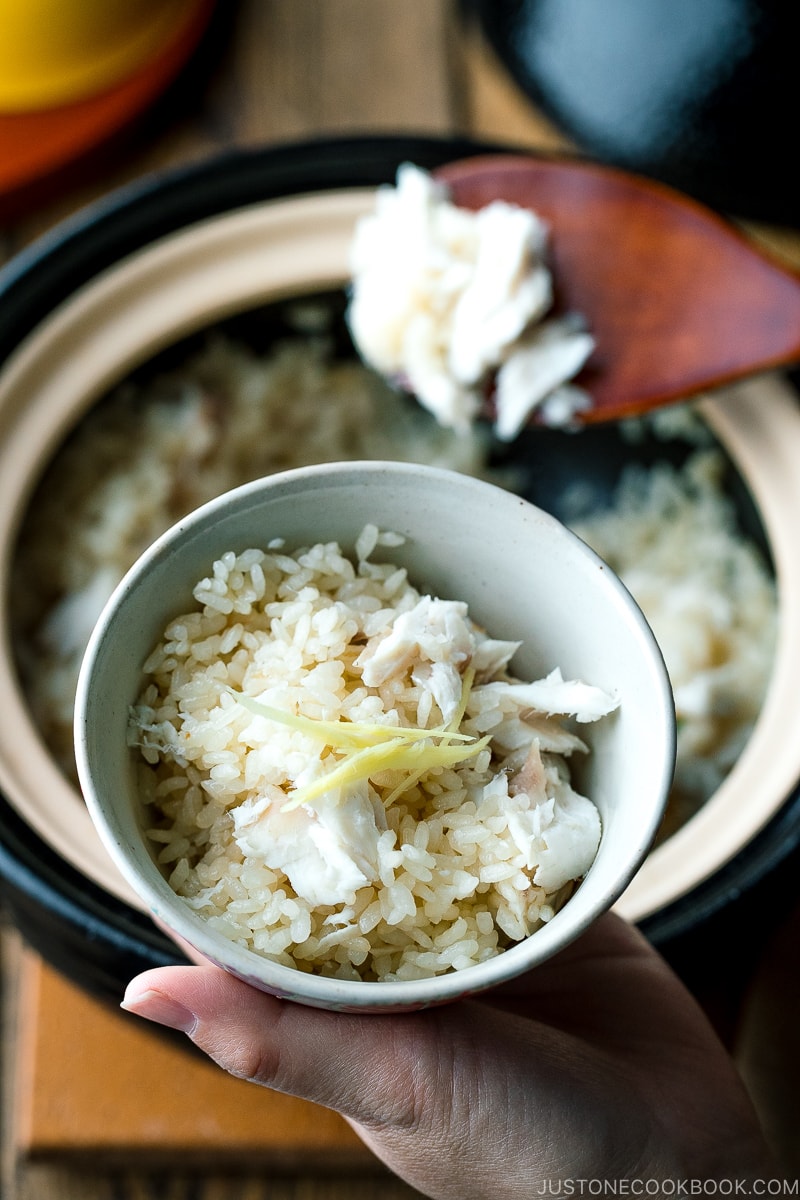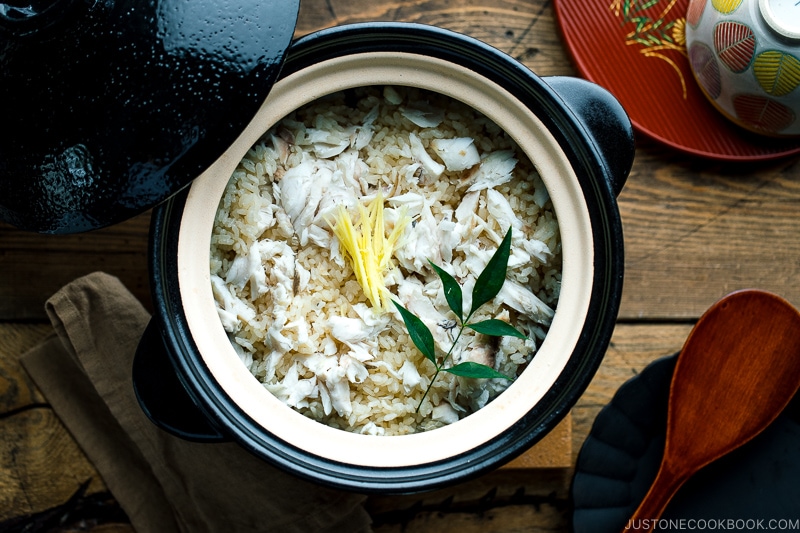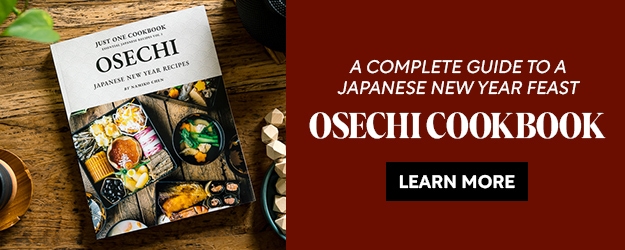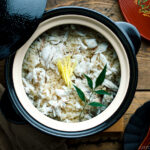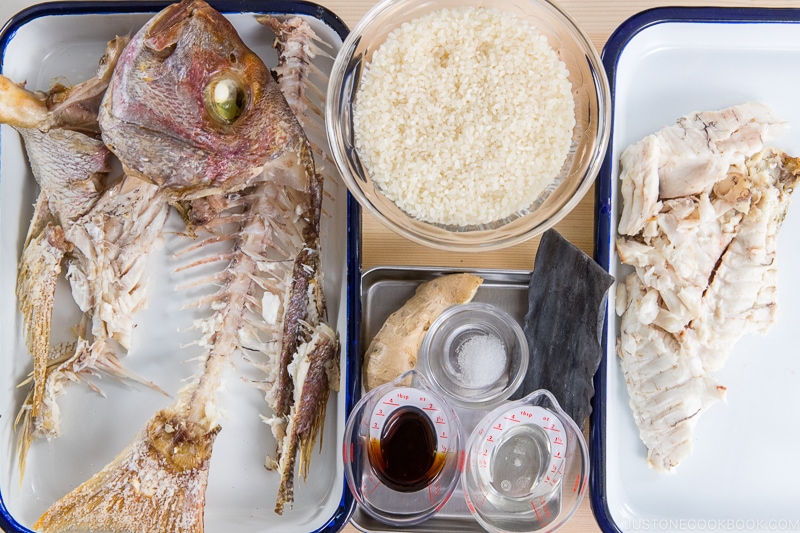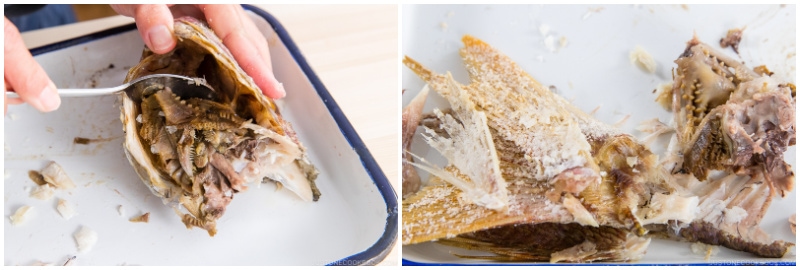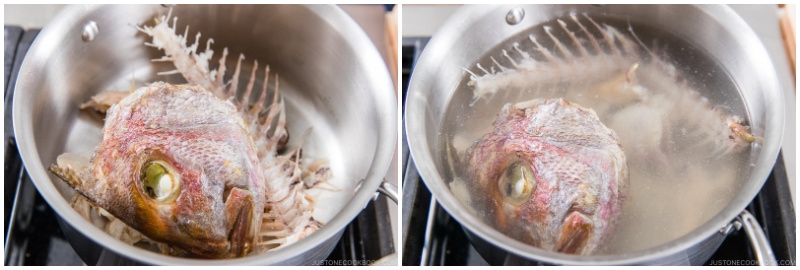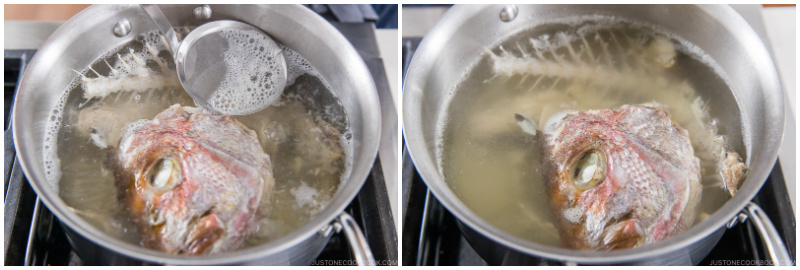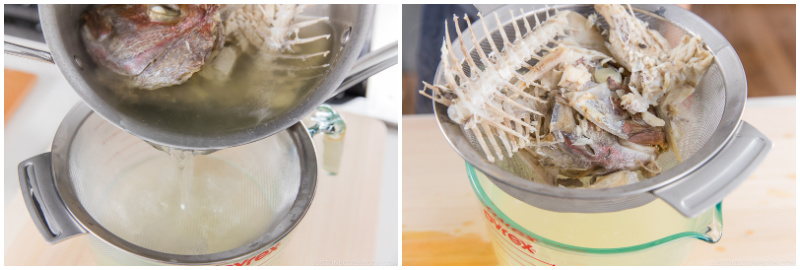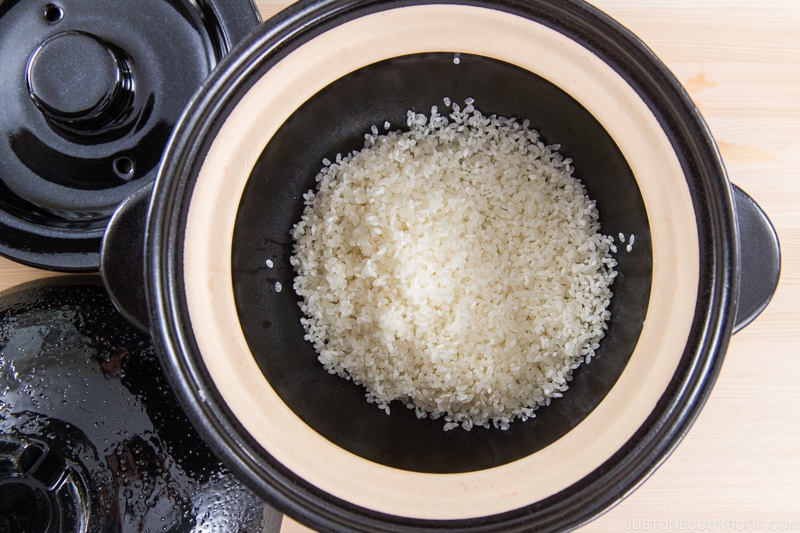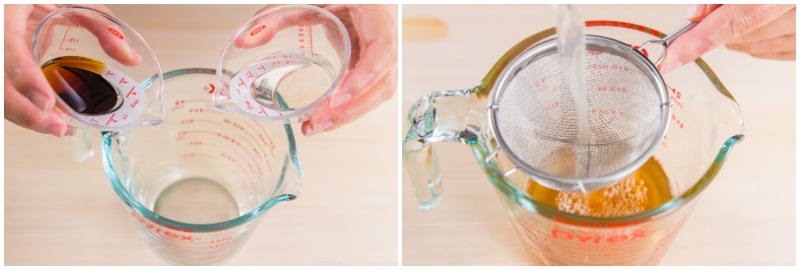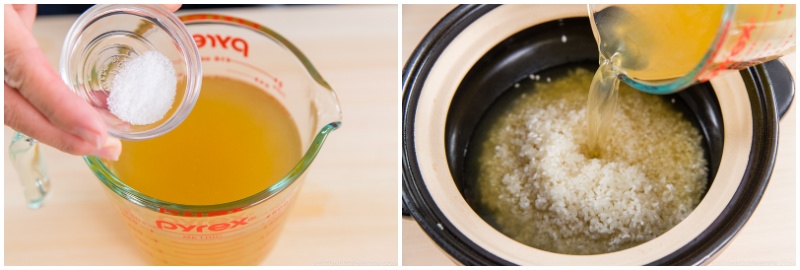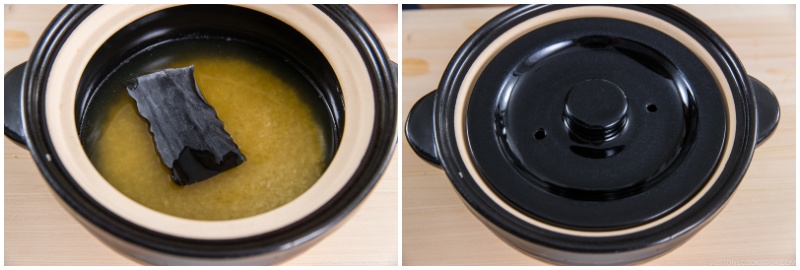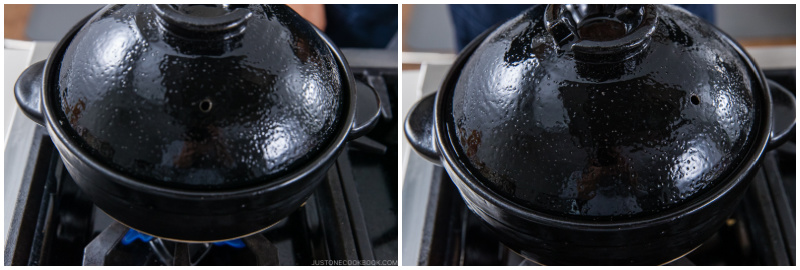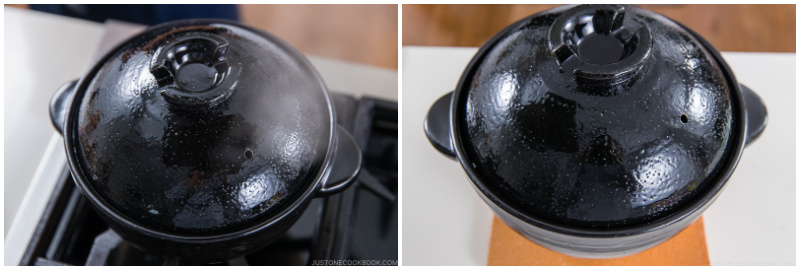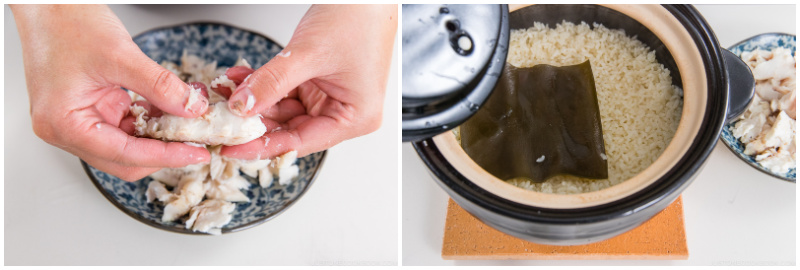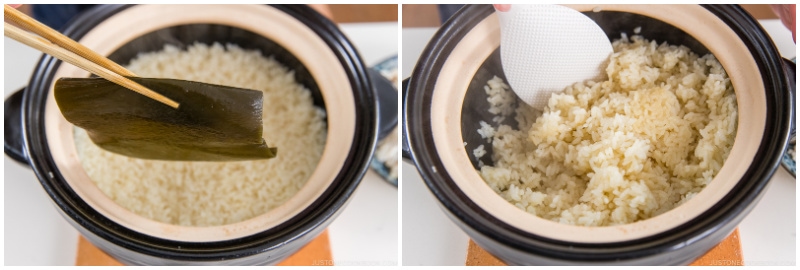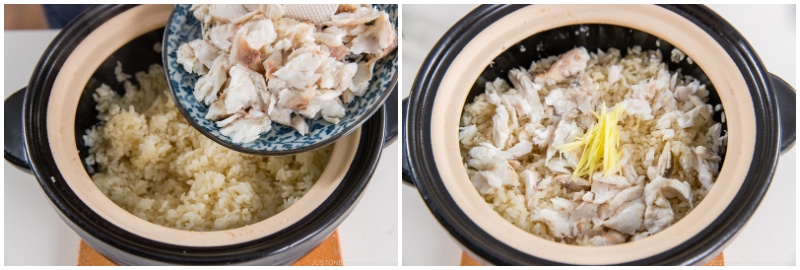After enjoying Japanese Baked Sea Bream, you probably end up with sea bream bones, the head, and maybe some meat. Today, I’ll show you how to reuse the leftover goodies to make another wonderful dish—Tai Meshi or Japanese Sea Bream Rice (鯛飯).
Table of Contents
What is Tai Meshi? Ingredients You’ll Need How to Make Tai Meshi with Leftover Baked Sea Bream Use a Donabe or Heavy-Bottomed Pot Tips on How to Make Tai Meshi
What is Tai Meshi?
Tai Meshi or Taimeshi (鯛飯) is seasoned rice cooked with sea bream. Depending on your preference, there are a number of ways to make this dish. You can either cook the rice with the head of broiled sea bream, whole uncooked (raw) sea bream, or dashi soup stock made from leftovers. Regardless of how you cook it, it is a lot less work than it seems. We’ll be using the leftovers from my Japanese Baked Sea Bream recipe to make Tai Meshi. It’s the best way to stretch a prized ingredient into two luxurious meals.
Ingredients You’ll Need
How to Make Tai Meshi with Leftover Baked Sea Bream
Use a Donabe or Heavy-Bottomed Pot
I highly recommend using a heavy-bottomed large pot with a lid like a Japanese donabe (I used Kamado-san) or a Dutch oven, as they’re more suited for even cooking. If you use a thin-bottomed pot, the hot spots may burn the rice. Alternatively, you can cook it in a rice cooker using the same instructions.
Tips on How to Make Tai Meshi
Skim the fish broth. It is no doubt tedious work, but diligently skimming all the foam and scum from the broth will pay off. Removing impurities is very important for a clean-tasting and refined rice dish. Soak the rice. Japanese short-grain rice is rounder than other types of rice. Therefore, it requires a bit more time to soak up water to the core of the rice. You’ll have moist and tender rice if you soak it for 20–30 minutes. Measure the soy sauce and sake before adding the fish broth. To cook 2 rice cooker cups of rice in the donabe, you will need 400 ml of broth. In a measuring cup, add the soy sauce, sake, and other “liquids” first, then fill up with fish broth until it reaches 400 ml. Remove the fish bones as best you can. When you remove the meat from the fish, do your best to remove smaller bones, so you can fully enjoy the dish. You don’t want the drama of fishbone stuck in your throat. Add ginger to your liking. It may seem like a lot, but the ginger bestows a refreshing taste and fragrance. You will be surprised how much you like it. If your ginger is too spicy, soak it in water, squeeze it out, and add to the rice. Younger ginger with tender skin (not necessarily young ginger) tends to taste milder.
Cozy yet sophisticated, Tai Meshi is a thing of beauty. I hope you get a chance to serve this dish at your New Year’s table. Wish to learn more about Japanese cooking? Sign up for our free newsletter to receive cooking tips & recipe updates! And stay in touch with me on Facebook, Pinterest, YouTube, and Instagram.
